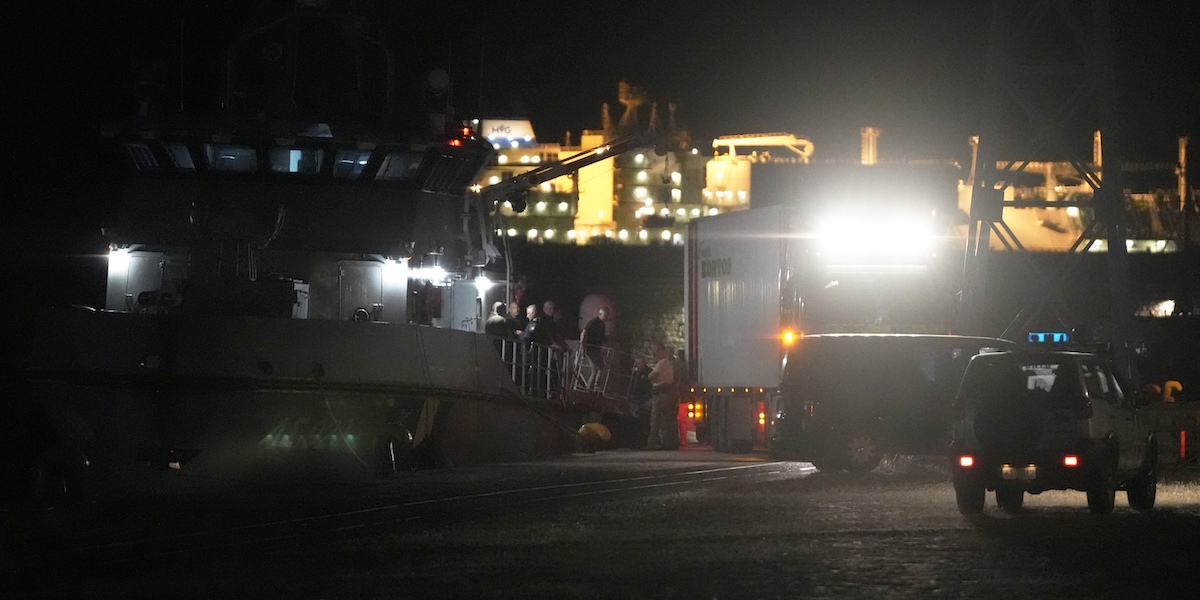Three days after one of the most serious shipwrecks in the recent history of the Mediterranean, the one that occurred off the Peloponnese in Greece, the dynamics of what happened are still unclear. However, the testimonies of the survivors are revealing a role for the Greek Coast Guard, even if it is not yet known for sure how active. The only thing we know is that there were hundreds of people on board the sunken former fishing vessel, probably between 400 and 750, and that the death toll of 78 deaths includes only the bodies that have been recovered: in all probability it is much higher.
According to reconstructions provided by the Greek authorities and other experts on migrations in the Mediterranean, the boat had left Libya and was headed for Italy when the propulsion system broke down during the night. Frontex, the European border control agency, had spotted it on Tuesday morning and had informed the competent authorities. Other sightings were later made by the Greek Coast Guard.
It is not clear when the boat’s engine failure occurred, but the Coast Guard said it intervened at 11pm on Tuesday, three hours before the shipwreck. At this point the version of the witnesses and that of Greece diverge.
According to the testimonies of the survivors, the Coast Guard would have thrown a rope to the ex-trawler to tow it to the mainland, an operation which, however, would have proved more complicated than expected. Speaking with former Prime Minister Alexis Tsipras, one survivor has said: «They didn’t know how to stretch the rope and the boat began to list to right and left. The Coast Guard was going too fast, but the boat was already listing heavily to port, and then she sank.’
Another testimony was given to Tasos Polychronopoulos, a local politician from the Greek city where the survivors are located, Kalamata. After speaking to a Syrian man who survived the shipwreck, Polychronopoulos said: ‘The Coast Guard vessel tied them up with a rope of some sort and attempted to tow them by veering to port. For unknown reasons the boat then heeled to the right and sank suddenly.
Gianni Santucci, correspondent of Corriere della Sera the Kalamata, ha written that he spoke to the cousin of a person who was on the former fishing vessel, missing. This person, an Egyptian living in Italy, told Santucci: «Thursday evening here among the survivors I spoke with the three friends who were traveling with my cousin, they told me that they had joked for a long time, don’t worry. Then there was the engine failure. They said that the Coast Guard threw a rope, which was tied to the fishing boat, then they left, but it is as if the lookout gave a too strong pull: the fishing boat started to dance and capsized».
The Coast Guard has provided a different version. At first he had denied the presence of a rope, saying that the intervening vessel had kept at a “fair distance” from the ex-trawler. Then a source from the Greek Port Authority quoted Friday from the Greek newspaper Kathimerini instead, he said that a rope was actually tied to the former fishing boat, to check its conditions and attempt to tow it, but the people on board would have untied it because they didn’t want to be taken to Greece, they wanted to continue the journey to Italy.
Government spokesman Ilias Siakantaris, after the news given by Kathimerini, confirmed the presence of the rope but specified that the Coast Guard “used it to stabilize itself and to approach the boat and see if help was needed”. He also added that the rope was not used to tow the ex-trawler.
In short, various gaps remain in the various reconstructions, if it is true that the Coast Guard intervened at 11pm and the boat with the migrants on board sank three hours later. Furthermore, boats like the former fishing boat, so crowded both on deck and in the hold, travel in a state of perpetual precariousness and risk capsizing at any moment.
